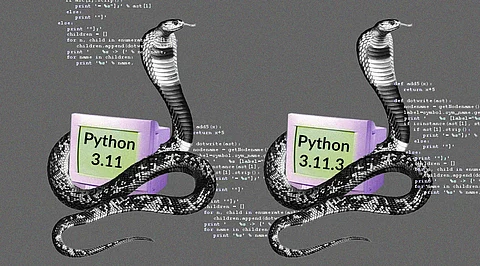

The changes between Python 3.11 And Python 3.11.3 are changelog appears to be an endless accumulation of bug patches, upgrades, and additions that might substantially enhance.
Faster code execution as a result of significant effort on the Faster CPython project, Task and exception groups that make it easier to deal with asynchronous code, several new type capabilities that improve Python's support for static typing, to deal with configuration files, native TOML support is provided.
Increased Speed: The first major change that data scientists will notice is a boost in speed the standard benchmark suite now runs roughly 25% quicker than in 3.10. Python 3.11 can be up to 60% quicker in some circumstances, according to the documentation.
More Informative Error Tracebacks: More comprehensive error messages are another feature that is instantly helpful in Python 3.11. Because of the new parser used in the interpreter, Python 3.10 already has improved error reporting. Python 3.11 builds on this by enhancing error messages to indicate the exact position of the defect. Rather than sending a 100-line traceback that terminates with a cryptic error notice, Python 3.11 links to the expression that caused the mistake.
Exception Notes: Explicit is better than implicit. The accompanying phrase is the second line of Python's Zen, which is a collection of the 20 design principles. This is a good illustration of how Python code should be as expressive as possible. To emphasize this design style, Python 3.11 contains exception remarks.
Exception Improvements: Multiple exceptions can be raised and handled at the same time using the new except* syntax and the new Exception Group exception type. This enables the graceful handling of difficulties when many errors might be reported concurrently, as when dealing with asynchronous or concurrent methods, or when dealing with numerous failures when retrying an action. This implies that the default path for a try/except block is quicker and consumes less memory. The time required to catch an exception has been lowered by around 10%. Contextual remarks can be added to exceptions in addition to the exception text.
New Typing Function: Self Statically typed languages improve code readability and debuggability. Defining the precise kind of variables, function inputs, and outputs may save you hours of debugging time and make it easier for others to interpret your code. Adding typing annotations will also enable contemporary IDEs to display function definitions as you type their names, making your functions easier to comprehend for others. Except for classes that return instances of themselves, Python's strong typing module formerly supplied classes for practically any data type.
Upgrades to the Standard Libraries: Other enhancements to the standard libraries improve user experience. First, the math module receives two long-awaited functions. Amazingly, Python waited 28 years to add the cube-root function, but as the saying goes, better late than never.
Removing 'dead batteries' from the standard library: One of Python's early advantages was that it came with batteries. This somewhat legendary statement is used to emphasize that a lot of capability is built into the programming language itself. The true batteries, on the other hand, are accessible in Python's standard library. This is a collection of packages that come with every Python installation.
Join our WhatsApp Channel to get the latest news, exclusives and videos on WhatsApp
_____________
Disclaimer: Analytics Insight does not provide financial advice or guidance on cryptocurrencies and stocks. Also note that the cryptocurrencies mentioned/listed on the website could potentially be scams, i.e. designed to induce you to invest financial resources that may be lost forever and not be recoverable once investments are made. This article is provided for informational purposes and does not constitute investment advice. You are responsible for conducting your own research (DYOR) before making any investments. Read more about the financial risks involved here.
